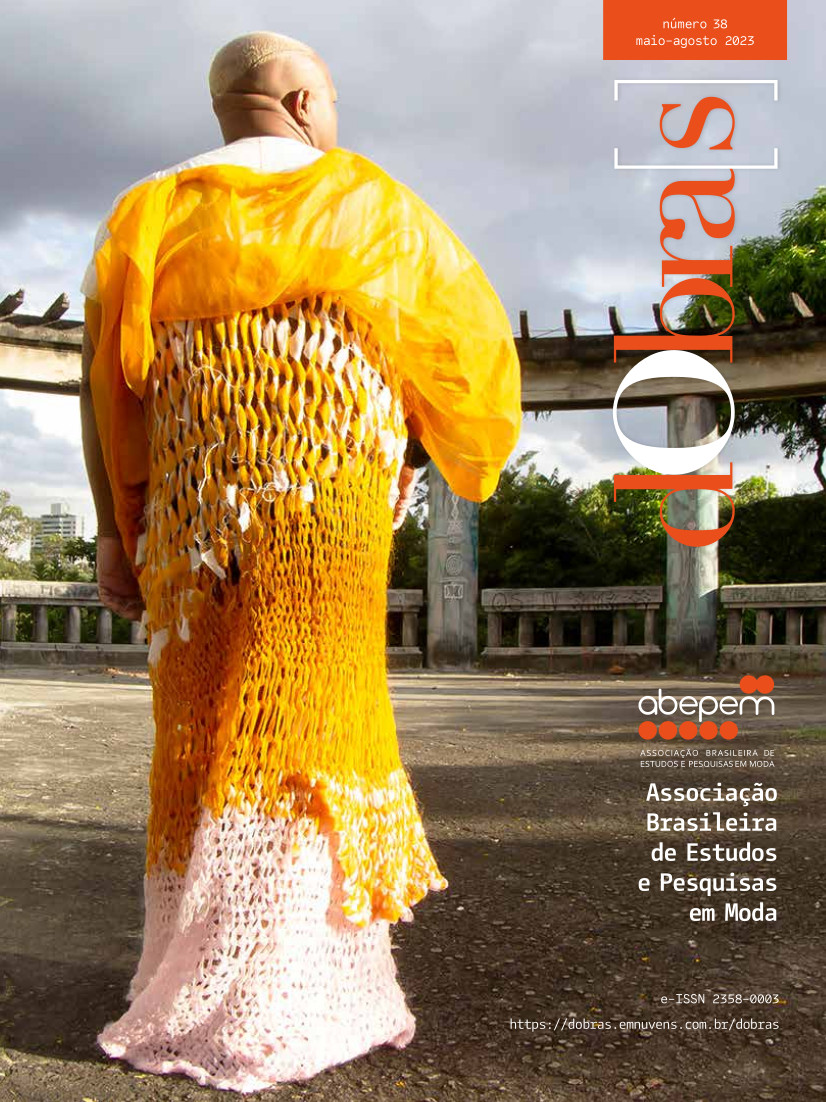Sobre o mito ocidental de Takarazuka fantasy: mulheres japonesas representam homens e ocidentais em cena
DOI:
https://doi.org/10.26563/dobras.i38.1572Palavras-chave:
Takarazuka, Otokoyaku, Orientalismo Fenomenológico, Ocidentalismo, SemióticaResumo
O presente artigo investiga o grupo japonês Takarazuka Revue e sua trupe de atrizes, mulheres que performam papéis de ocidentais e homens em musicais, subvertendo as orientações de poder típicas do Orientalismo. A construção da identidade ocidental será analisada na superfície externa do corpo, figurinos, objetos de cena, e enredos musicais, bem como o corpo maquiado e outras técnicas corporais apresentadas no palco. Os elementos visuais serão analisados a partir de um aporte semiótico, investigando em que medida os significados sobrepostos nas performances expressam um Ocidente romantizado, distante da sociedade ocidental de hoje. As técnicas corporais ritualizadas das performers do Takarazuka Revue revelam a natureza performativa do gênero e da raça. O Orientalismo Fenomenológico de Ahmed sustentará a análise da orientação entre Ocidente e Oriente, otokoyaku (imitador masculino) e musumeyaku (imitadora feminina), performers e audiência, apresentando o fluxo das dinâmicas de poder em estruturas Ocidentalistas/ Orientalistas e sua importância na imagem da companhia e, finalmente, os discursos “híbridos” que ela manipula.
Downloads
Referências
AHMED, Sara. Queer Phenomenology: Orientations, Objects, Others. Durham: Duke University Press, 2006. DOI: https://doi.org/10.1515/9780822388074
BARTHES, Roland. Mythologies. Selected and translated by Annette Lavers. New York: Hill and Wang, 1979.
BAUDRILLARD, Jean. Symbolic Exchange and Death. Translated by Iain Hamilton Grant. London: Sage Publications, 1993.
BAUDRILLARD, Jean. Simulacra and Simulation. Translated by Sheila Faria Glaser. Ann Arbor: University of Michigan Press, 1994. DOI: https://doi.org/10.3998/mpub.9904
BENJAMIN, Walter. The Work of Art in the Age of its Technological Reproduction. Translated by J.A. Underwood. London: Penguin, 2008.
BERGER, John. Ways of Seeing. London: Penguin, 1972.
BURUMA, Ian.; MARGALIT, Avishai. Occidentalism: the West in the eyes of its enemies. New York: Penguin Press, 2004.
BUTLER, Judith. Gender Trouble: Feminism and the Subversion of Identity. London: Routledge, 1990.
BUTLER, Judith. Bodies that Matter: On the Discursive Limits of Sex. London: Routledge, 1993.
CRAIK, Jennifer. The Face of Fashion: Cultural Studies in Fashion. London: Routledge, 1993.
DYER, Richard. The Matter of Images: Essays on Representations. London: Routledge, 2002.
EICHER, Joanne. Clothing, Costume, and Dress in STEELE, Valerie(ed.). Encyclopedia of clothing and fashion, volume 1. Farmington Hills, MI: Charles Scribner’s Sons, 2005a.
JARDIM, Marilia. On Niqabs and Surgical Masks: a Trajectory of Covered Faces. In Lexia – Rivista di Semiotica, 1 (37/38). pp. 165-177. 2021. Available at: https://doi.org/10.1515/sem-2020-0050. https://doi.org/10.4399/97888255385338 Last visited: 26 October. 2022.
KANO, Ayano. Acting Like a Woman in Modern Japan: Theatre, Gender and Nationalism. New York: Palgrave, 2001. DOI: https://doi.org/10.1007/978-1-349-63315-9
KEEVAK, Michael. Becoming yellow: a short history of racial thinking. Princeton, N.J: Princeton University Press, 2011. DOI: https://doi.org/10.23943/princeton/9780691140315.001.0001
LÉVI-STRAUSS, Claude. The Savage Mind. London: Weidenfeld and Nicolson, 1966.
NAKAMURA, Karen.; MATSUO, Hisako. Female masculinity and fantasy spaces: transcending genders in the Takarazuka Theatre and Japanese popular culture. In ROBERTSON, James(ed.).; SUZUKI, Nobue. Men and masculinities in contemporary Japan: dislocating the salaryman doxa. Berkeley: University of California Press, 2003.
ROBERTSON, Jennifer. Takarazuka: sexual politics and popular culture in modern Japan. Berkeley: University of California Press, 1998. DOI: https://doi.org/10.1525/california/9780520211506.001.0001
SAID, Edward. Orientalism. London: Routledge and Kegan Paul, 1978.
SONTAG, Susan. Regarding the Pain of Others. London: Penguin, 2003. DOI: https://doi.org/10.3917/dio.201.0127
STICKLAND, Leonie. Gender gymnastics: performing and consuming Japan’s Takarazuka Revue. Melbourne: Trans Pacific Press, 2008.
YAMANASHI, Makiko. A History of the Takarazuka Revue Since 1994: Modernity, girls’ culture, Japan pop. Boston: Global Oriental, 2012. DOI: https://doi.org/10.1163/9789004250215
Downloads
Publicado
Como Citar
Edição
Seção
Licença
Copyright (c) 2023 Yuxuan Zhou

Este trabalho está licenciado sob uma licença Creative Commons Attribution-NonCommercial-ShareAlike 4.0 International License.
Direitos Autorais para artigos publicados nesta revista são do autor, com direitos de primeira publicação para a revista. Em virtude de aparecerem nesta revista de acesso público, os artigos são de uso gratuito, com atribuições próprias, em aplicações educacionais e não-comerciais









